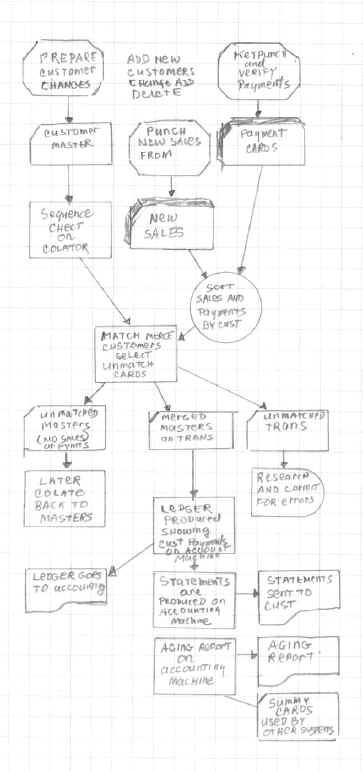
|
Leeloo: I don't know love. I was built to protect not to love, so there is no use for me other than this. The Fifth Element (1997) |

Dominic Vautier
updated 09-2010
again 1-2014
Every company needs to stay alive and the way this happens is to get paid for goods and services. One of the first practical applications of unit record was receivables. Presented here is a very basic example of such a system all run on unit record equipment using cards.
More elaborate systems used specific identification where specific payments were assigned to each item. This is a more general system that does not connect payment to a specific purchase. Today a lot of our credit card systems work like this one does, which is generally called a balance forward system, simple stuff in which credit and debit transactions are applied to a balance.
For an idea of what the flowchart symbols mean look here.
Setting up a typical receivables system
 There are three main files involved, a
customer master, which contains customer information such customer name,
billing address, location and maybe credit limit.
There are three main files involved, a
customer master, which contains customer information such customer name,
billing address, location and maybe credit limit.
The second file contains transaction information. This can be by item or lot, and department. It contains customer number, transaction type and amount.
The payment file contains customer number, check number and payment amount.
The Sales and payments are created new each month but the customer master remains static.
credit and payment files are sorted or merged together by transaction code and customer number so that the sale comes before the paymentCustomer master cards are then match merged with the combined sales and payment cards. Single masters are selected out, so that the remaining card file with the customer master file contains just sale and payment information.
Sales and payments are then tallied to produce summary cards or balance forward cards..
A ledger is produced and summary cards are punched to go into other systems such as budget and aging reports.
The accounting machine then prints statements to be sent out to customers tallying sales and payment information along with current balances.